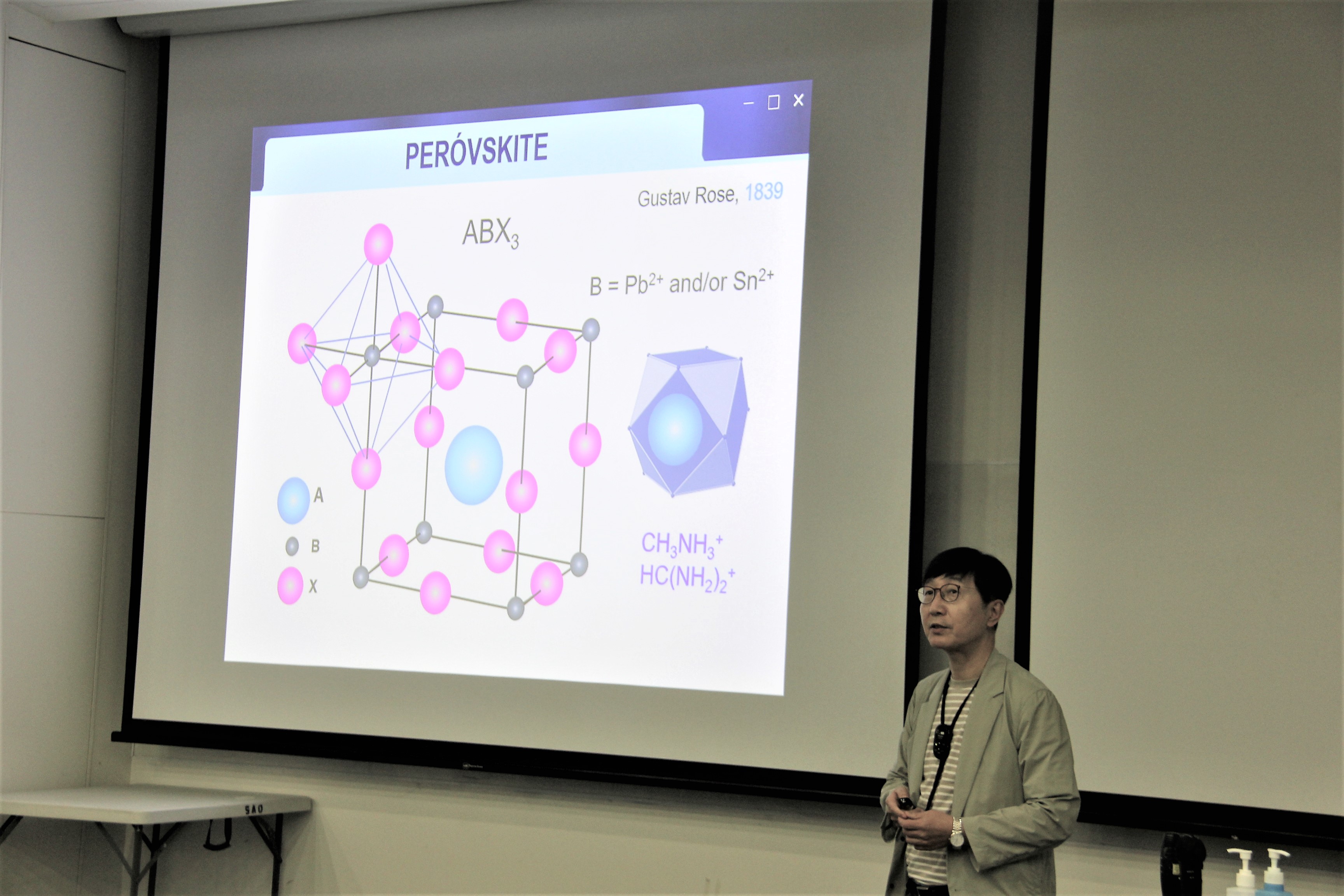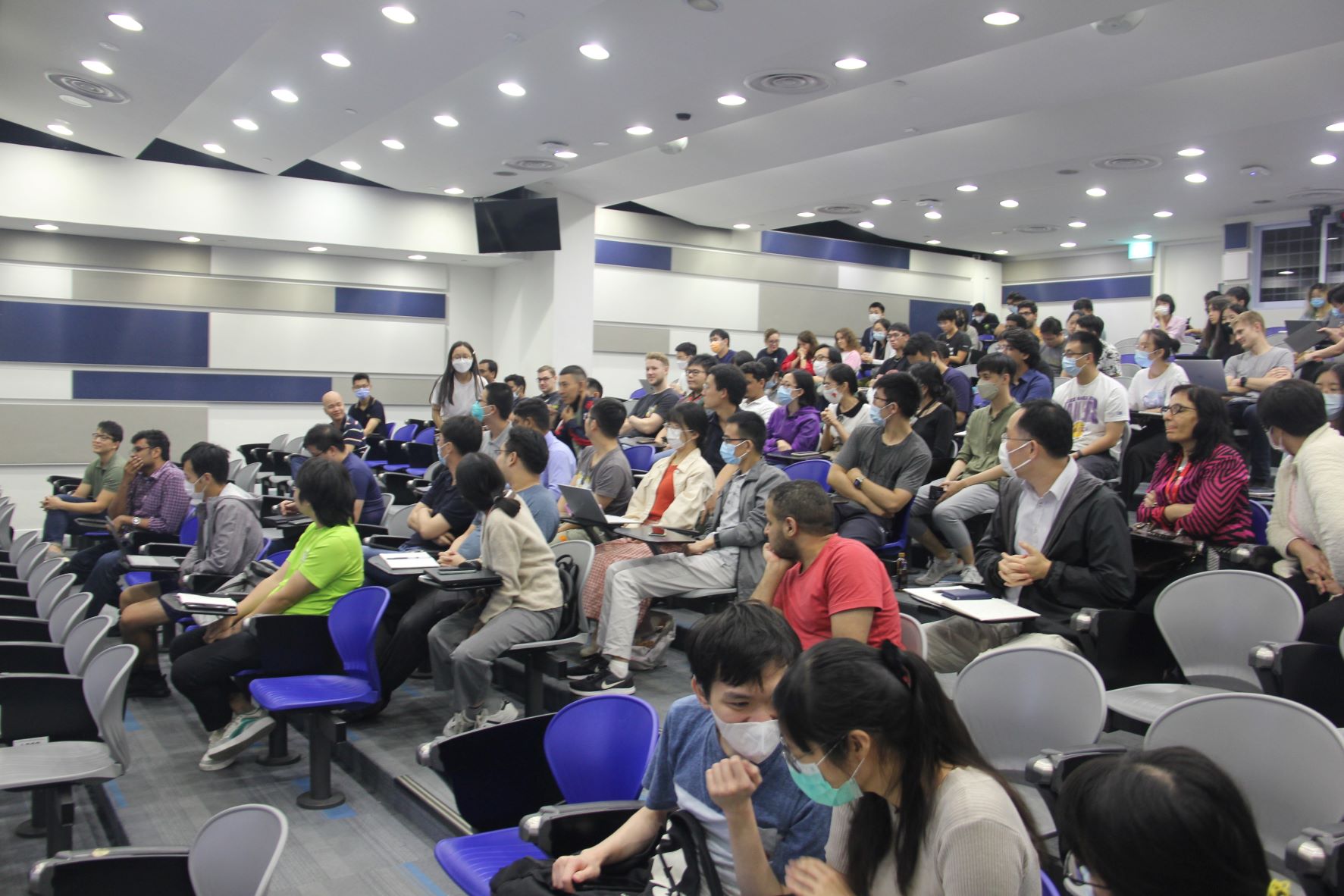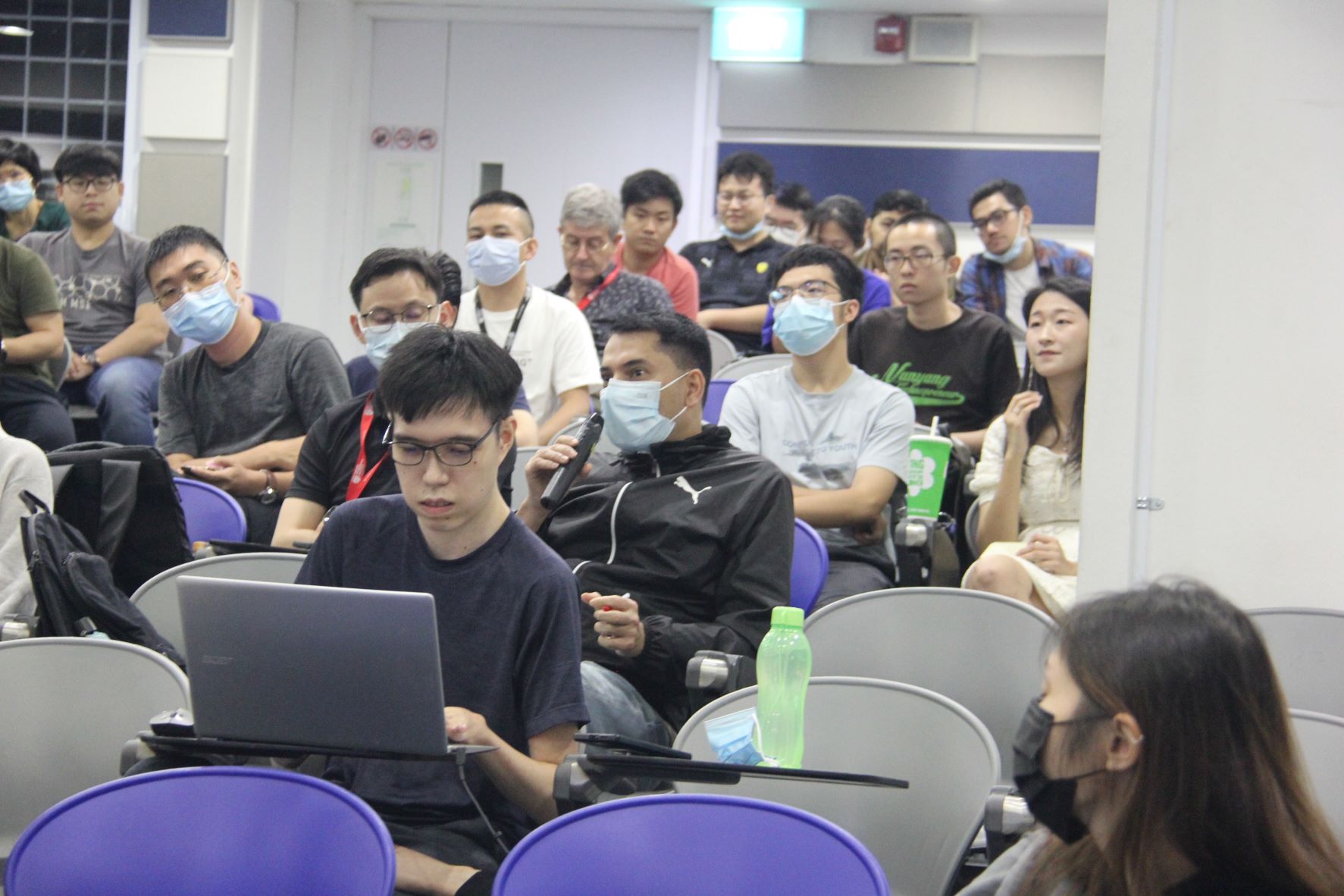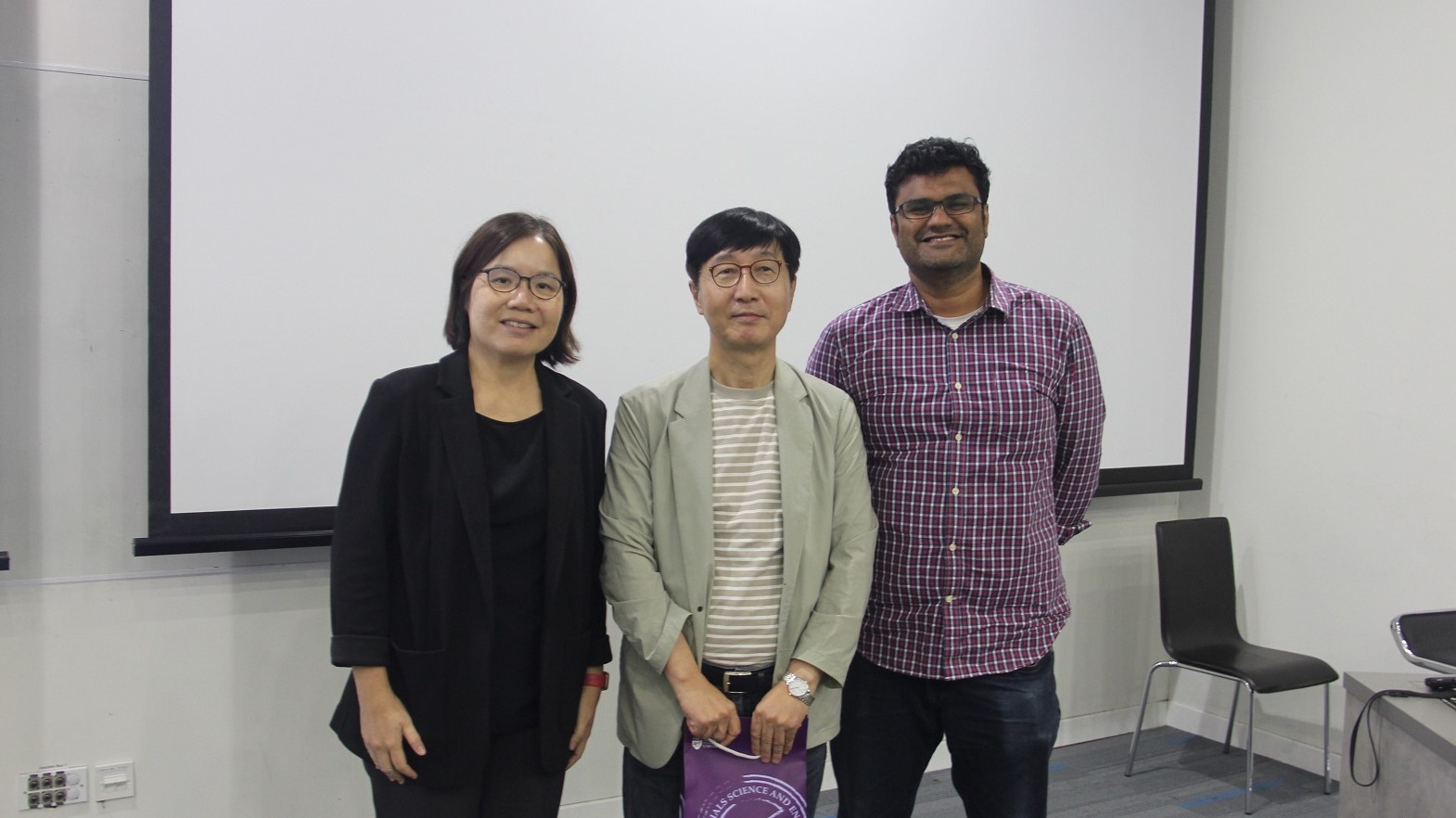MSE-IAS Seminar on Perovskite by Prof Nam-Gyu Park
by Ernest Tang | PhD Student, School of Materials Science and Engineering
This MSE-IAS seminar lecture titled “For the Stable and Efficient Perovskite Solar Cells” with Prof Nam-Gyu Park, Director of SKKU Institute of Energy Science and Technology (SIEST) at Sungkyunkwan University, was jointly organised by IAS NTU, NTU MSE and the MSE Graduate Students' Club on 13th December 2022.
Solar cells, particularly, photovoltaic has been a crucial renewable energy source that have been widely studied. Currently, most photovoltaics are first generation solar cells which are silicon based. In the exploration of new materials for next generation solar cells, one family of material known as Perovskite was a viable candidate. While Perovskite was eventually demonstrated to work in a dye sensitised solar cell, however the low efficiency and instability of Perovskite meant that it is not competitive as compared to existing silicon technology.
Regarding the challenges of using Perovskite in solar cell, Prof Park mentioned that while his group demonstrated that Perovskite quantum-dot solar cell is able to achieve a power conversion efficiency of 6.5%, more is needed to be done. In 2012, Prof Park had a breakthrough for Perovskite solar cell by demonstrating the first working stable solid-state perovskite solar cell in 2012 that achieve a new high efficiency of 9.7%.

This helps pave the way for further research into this class of material for solar cell and thus has seen numerous research work pushing the efficiency to over 30% and long-term stability under adverse conditions. With such performance, Perovskite solar cell has the potential to overtake other materials such as GaAs and CdTe solar cells to be the next generation solar cell for commercial usage. However, the road to commercialisation will require better understanding of the Perovskite degradation and several technological hurdles to resolve.
Through the years of research, Prof Park has discovered several factors that affect the power conversion efficiency, with one notable fact that facet engineering is crucial as it is noted that the (110) crystal facet has the most desirable dielectric constant and exciton production and the (100) facet is the most sensitive to moisture. In addition, residual chloride ions during processing does affect the power conversion efficiency but aids in grain growth, thus a balance is needed. Prof Park also suggested that a combination of defect, interface, grain boundary and facet engineering combined with surface treatment techniques are necessary to produce an ideal Perovskite solar cell.
Despite the growing success of Perovskite solar cells, further research is needed to reach the theoretical power conversion efficiency and long-term stability. In the future direction of Perovskite solar cells, achieving both thermal stability and stability under adverse humidity condition are crucial.
In conclusion, this research and seminar by Prof Park had shared his findings and shown the prospect of Perovskite solar cell to be the next generation solar cell in humanity’s quest for renewable energy. These findings and breakthrough have allowed better understanding in achieving better efficiency and the future directions needed to further the frontier of Perovskite Solar cell research.
 |  |
 | |
| From left to right: Prof Lam Yeng Ming (Chair, School of Materials Science and Engineering), Prof Nam-Gyu Park, and Prof Nripan Mathews (Associate Director, IAS NTU; Provost’s Chair in Materials Science and Engineering) | |















/enri-thumbnails/careeropportunities1f0caf1c-a12d-479c-be7c-3c04e085c617.tmb-mega-menu.jpg?Culture=en&sfvrsn=d7261e3b_1)

/cradle-thumbnails/research-capabilities1516d0ba63aa44f0b4ee77a8c05263b2.tmb-mega-menu.jpg?Culture=en&sfvrsn=1bc94f8_1)






